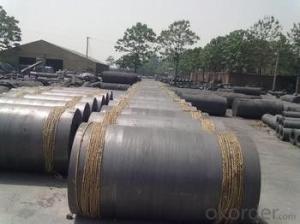When it comes to the heart and soul of the steel industry, graphite electrodes play a pivotal role. These cylindrical wonders are the unsung heroes of the electric arc furnaces, where they contribute to the production of the very steel that forms the backbone of our modern world. But what exactly are graphite electrodes, and why are they so crucial in the world of metallurgy? Let’s dive into the fascinating world of these carbon-based marvels and explore their significance, challenges, and the future of this industry.
Graphite electrodes are essentially made from pure graphite, which is an allotrope of carbon. They are known for their high electrical conductivity, thermal conductivity, and resistance to heat. These properties make them ideal for use in electric arc furnaces, where they generate the intense heat required for melting and refining metal. The process begins with the consumption of electrical energy, which is transformed into heat energy through the conduction of electric current. This heat energy, in turn, melts the metal, allowing for the production of steel.
The production of graphite electrodes is a complex process that involves several stages, including calcination, graphitization, and machining. Calcination is the first step, where the raw materials, such as petroleum coke and pitch, are heated to remove impurities and increase the carbon content. Graphitization follows, where the material is further heated to temperatures above 2,500 degrees Celsius, transforming it into pure graphite. Finally, the graphite is machined into the desired shape and size for use in electric arc furnaces.
One of the most significant challenges faced by the graphite electrode industry is the fluctuating market demand. The demand for steel is directly linked to the demand for graphite electrodes, as they are essential for steel production. Economic downturns, changes in industrial policies, and shifts in consumer preferences can all impact the demand for steel, and by extension, graphite electrodes. Additionally, the production of graphite electrodes is energy-intensive, which can lead to high costs and environmental concerns.
Despite these challenges, the graphite electrode industry has shown resilience and adaptability. Technological advancements have led to the development of more efficient and sustainable methods for producing graphite electrodes. For instance, the use of alternative raw materials, such as needle coke, has been explored to reduce the reliance on petroleum coke. Furthermore, efforts have been made to improve the energy efficiency of the production process, reducing the overall environmental impact.
The future of the graphite electrode industry looks promising, with growing demand for steel in various sectors, including construction, automotive, and renewable energy. As the world moves towards a more sustainable future, the need for efficient and eco-friendly methods of steel production will only increase. This presents an opportunity for the graphite electrode industry to innovate and develop new technologies that can meet these demands while minimizing the environmental footprint.
In conclusion, graphite electrodes are more than just a component in the steel production process; they are the driving force behind it. Their unique properties and the intricate process of their production make them an essential part of the metallurgical world. As we look to the future, it is crucial for the industry to continue evolving and adapting to the changing landscape, ensuring the sustainable production of steel for generations to come.

